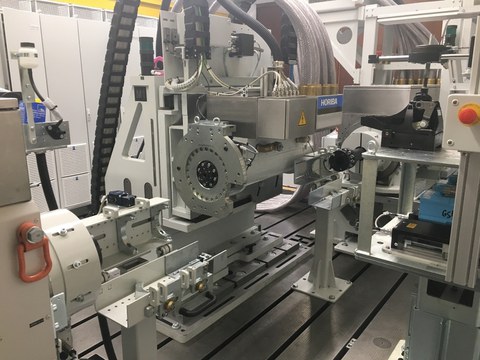Jun 29, 2020
On the way to virtual testing on the powertrain test rig
Due to increasing cost and time pressure, efficient and agile methods for securing vehicle characteristics and functionalities will be required in the future. In particular, vehicle functions based on AI algorithms or adaptive control unit properties will pose real challenges in the area of protection in the future. The concept of Virtual Testing, a combination of experimental and simulation-based test procedures, is a promising approach to solving this problem.
At the LKT's powertrain test rig, a start has been made on implementing this procedure by laying the foundations for virtual testing by virtualizing the test object and test rig. Advantages are the possibility to analyse the influence of the test rig itself on the test result as well as the development of new test and validation methods that can be applied at an early stage. Thanks to virtualisation, such methods can be established much earlier in the development process and complex and expensive prototypes and road tests can be reduced to a necessary minimum.
Furthermore, in this context, a profitable networking of test rigs is also aimed at, which should allow the joint, simultaneous testing of different subsystems in the overall vehicle context. For example, the coupling of drive train and engine test rigs is conceivable.
Contact:
 © Henrik Schmidt
© Henrik Schmidt
Research Associate
NameMr Dipl.-Ing. Henrik Schmidt
Testing methods NVH and durability
Send encrypted email via the SecureMail portal (for TUD external users only).
Visiting address:
Jante-Bau, JAN 35-C George-Bähr-Straße 1b
01069 Dresden
Research Associate
NameMr Dipl.-Ing. Marcus Steinbeiß
Chassis, Power train
Send encrypted email via the SecureMail portal (for TUD external users only).
Visiting address:
Jante-Bau, JAN 35-D George-Bähr-Straße 1b
01069 Dresden

